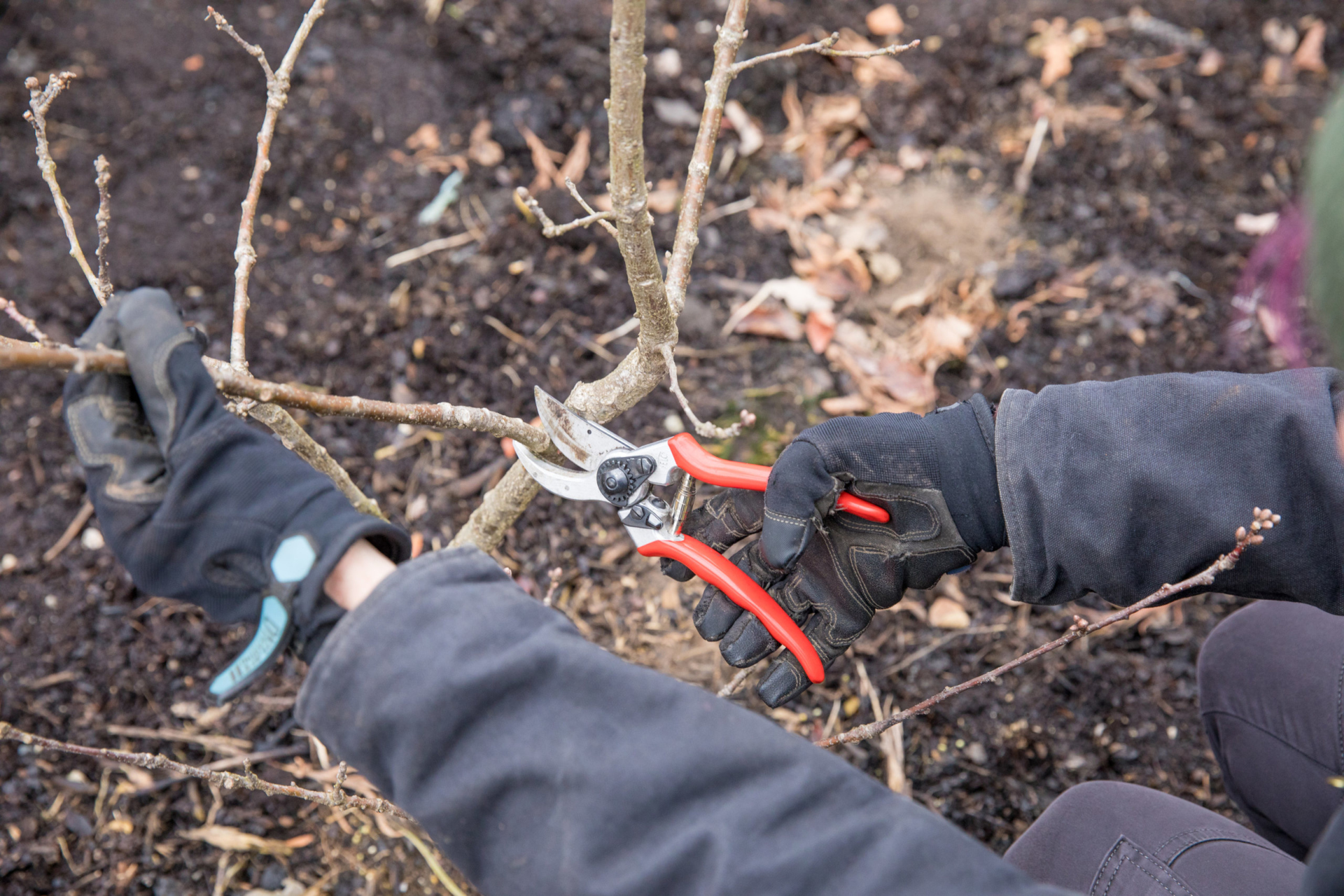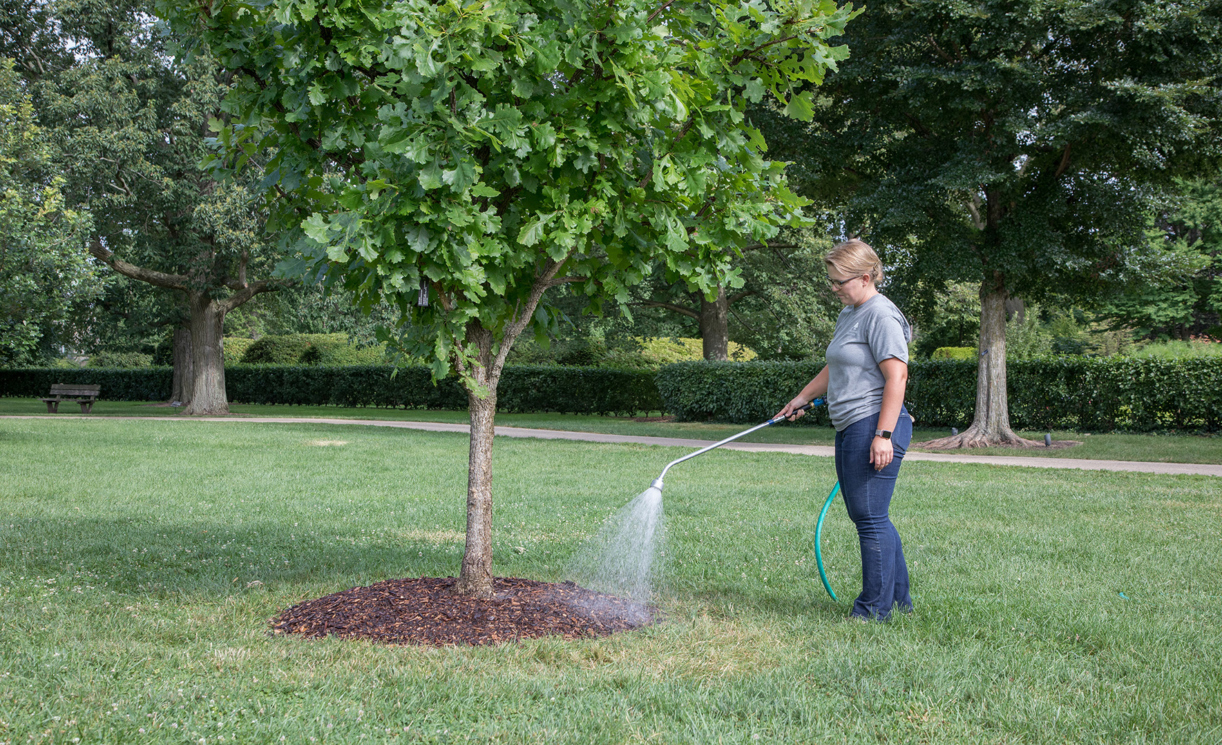Transplant shock is fairly common in newly transplanted trees. The Morton Arboretum’s researchers have found that a tree can lose as much as 90% of its root system when it is removed from the nursery. This causes a great deal of stress on the plant as it tries to reestablish itself. Research has shown that approximately one year of recovery is needed for every inch of tree diameter. Starting a regular plant maintenance and inspection program to head off problems early and providing good aftercare will help maintain the health and vigor of your newly planted trees and shrubs.
Water
Water is probably the most important element in caring for new trees and shrubs. Since a newly transplanted tree or shrub has not extended its roots into the existing soil, adequate moisture needs to reach the root ball. Soil type and the amount of rainfall govern the amount of watering necessary. On most well-drained soil, 1 inch of water per week throughout summer and fall is required to establish and maintain good growth. In sandy soils, as much as 2 inches of water per week is needed.
Mulch
Mulch is another important element in good plant health-care maintenance. Apply a 3- to-4-inch layer of organic composted mulch (wood chips, leaves, or pine bark) extending from the base of the plant out past the drip line (end of the branches). Do not let the mulch rest against the trunk of the plant. All plants benefit from mulch because, as the mulch breaks down, it provides an excellent growing medium for roots and acts as a slow-release fertilizer. Mulch will also help conserve moisture, moderate soil temperatures, eliminate weeds, and protect the trunk from mechanical injury, especially weed whips and lawn mowers.
Fertilization
Fertilization at the time of planting is generally not recommended.
It is ineffective until the root system has a chance to reestablish. It is usually advisable to wait two or three years before applying fertilizer, and then it is recommended to get a soil test first.
Pruning
Pruning after planting should be limited to removing dead, rubbing, or broken branches only. Wait at least a year before removing any larger limbs or shaping the structure of the tree or shrub. Remember, pruning encourages growth, so cut only where you need growth, and try to maintain the natural shape of the plant.
Support
Occasionally trees may require support, especially in windy sites, to prevent uprooting and leaning until the roots have had a chance to grow and stabilize that tree. Avoid staking too rigidly. Some trunk flexibility allows the flare at the base of the tree to develop naturally. Inspect staking material regularly for tightness and damage, and remove after one or two years.


